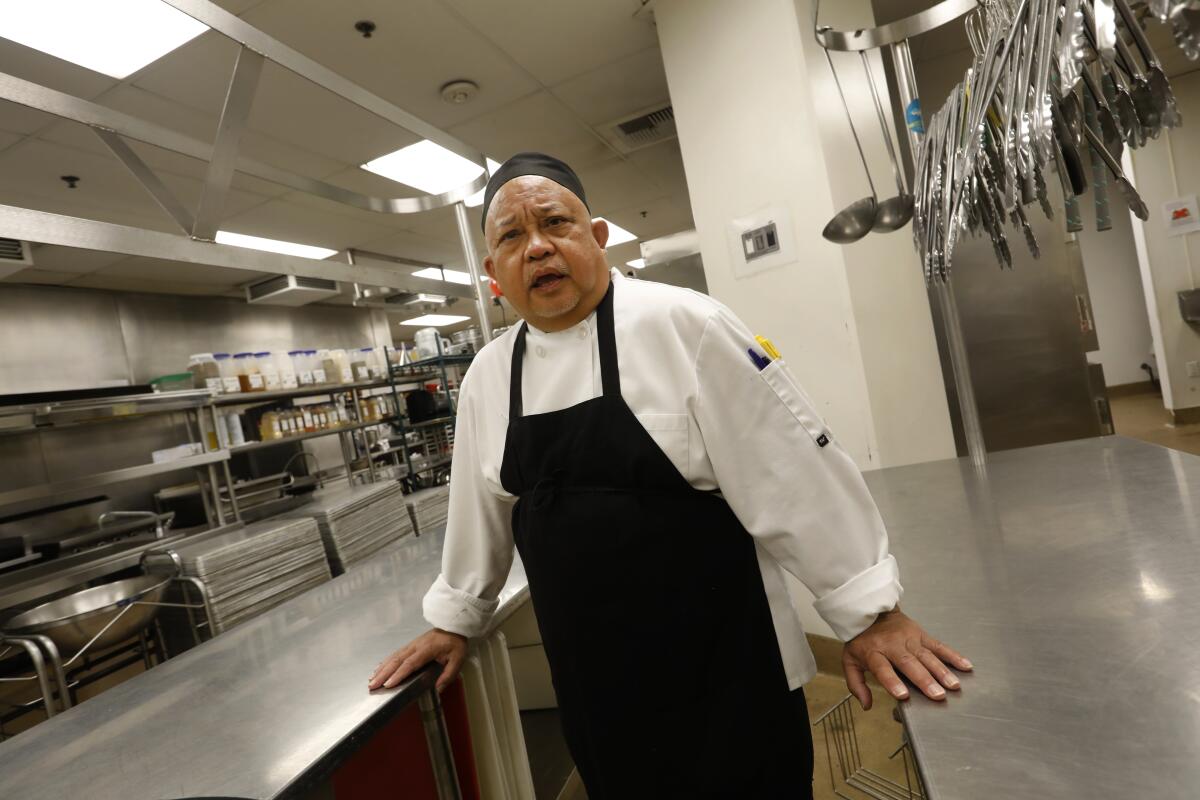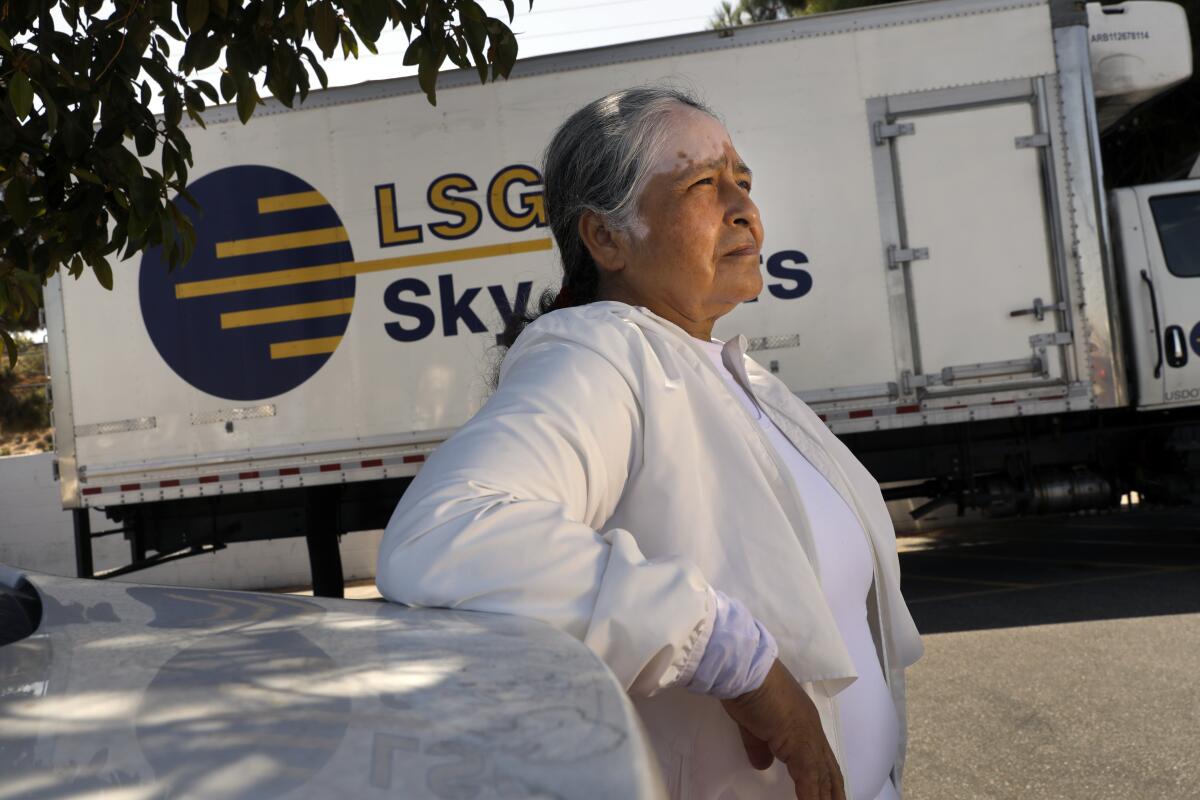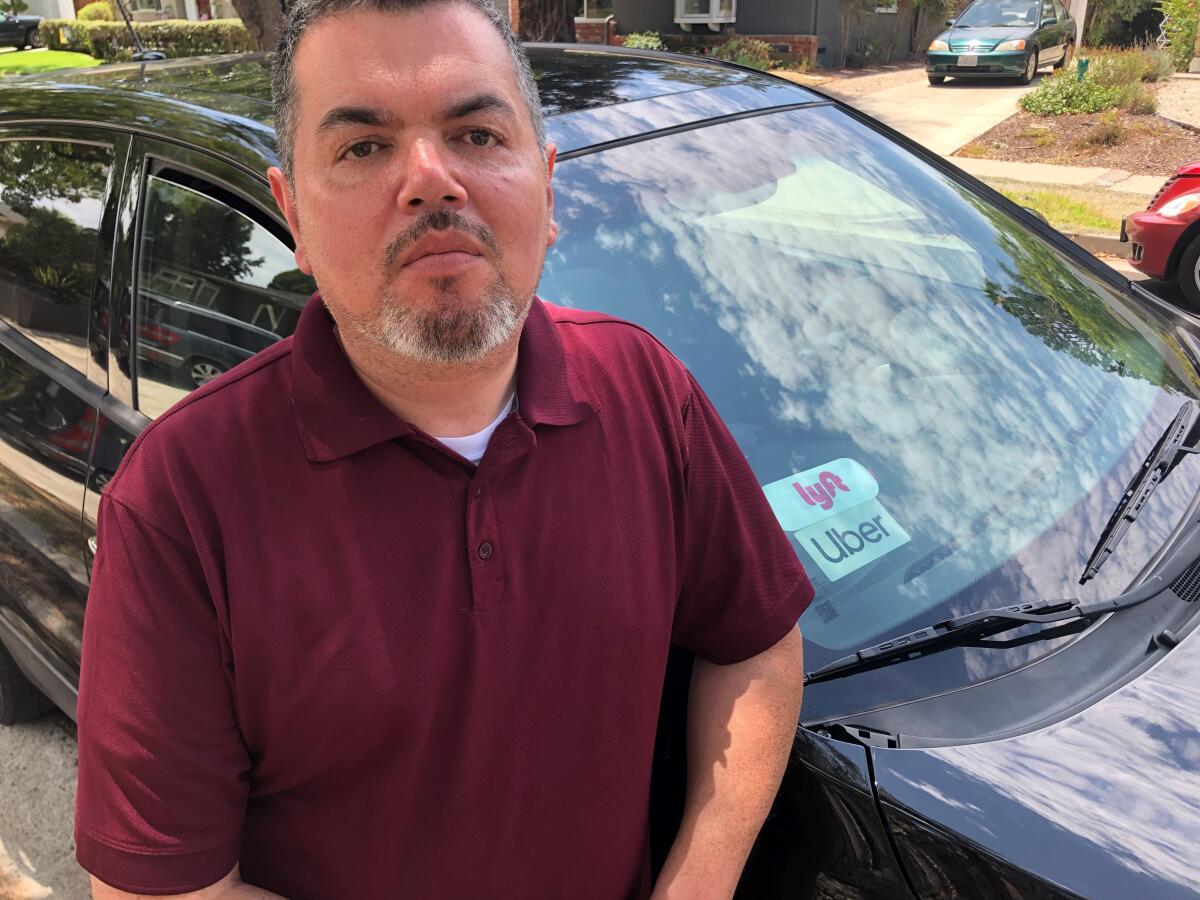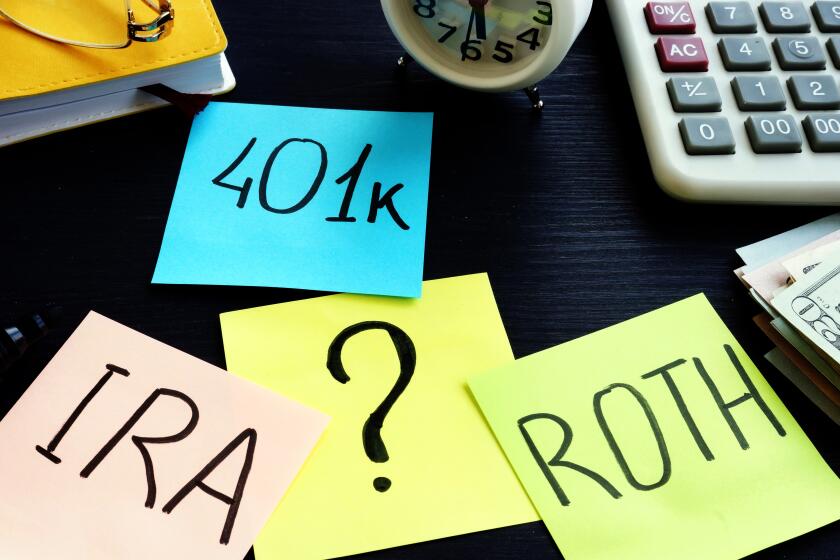Old age inequality: Can most Californians even afford to retire?

- Share via
Steven Johnson spent 19 years as a minimum-wage laborer for a Los Angeles moving company, lifting heavy furniture and suffering three hernias along the way.
For the last decade, the 61-year-old has worked as a waiter and as a cook in fast-paced kitchens.
Now arthritis has swollen his knees. “I tried to tough it out, icing myself down,” Johnson said. But he’s had to cut back to two days a week.
Johnson’s income last year: $11,000. As for retirement savings, he says: “That would be a big, fat zero.”
His employers offered neither pensions nor 401(k) plans.
Johnson is hardly alone. Some 52% of California’s private-sector employees ages 18 to 64 work for businesses that have failed to offer either kind of retirement plan, the AARP reported in August.
That’s 7.4 million people.
Small employers that do not offer a qualified retirement plan — which most do not — have to sign up for the state’s CalSavers IRA plan by June 30.
Corporate executives enjoy hefty retirement payouts, but over decades companies have jettisoned defined-benefit pensions that once guaranteed many rank-and-file workers a steady income until death. Voluntary 401(k) plans replace them in some cases but leave millions of workers vulnerable to stock market downturns. Others are unable to contribute given their low wages.
Among low- and middle-income earners, fear of old-age poverty can be particularly acute. Eight in 10 Californians who have lacked access to an employer-provided retirement plan make less than $50,000 a year.
Although many government employees still get pensions, as do many union members, and some private companies offer 401(k) plans, widespread inequity has spurred California and several other states to fill the void by enacting state-sponsored retirement programs for the private sector.
The Golden State initiative, CalSavers, requires businesses without their own plans to upload their employee rosters. CalSavers then enrolls the workers, automatically deducts 5% from payroll checks and deposits it into a Roth individual retirement account. Workers can opt out or boost or cut the amount they stash away.
“When you consider low wages, the high cost of living, debt burdens,” CalSavers may not be “a panacea,” said Katie Selenski, executive director of the program. “But we can level the playing field.”
So far, 384,000 Californians have CalSavers accounts, with assets of $272 million. Employers with five or more workers had to sign up by June or set up their own plans. Employers with one to five workers must comply by December 2025.
Republicans keep coming up with ways to destroy Social Security. Don’t let it happen.
But the program, launched in 2019, may do little to help those already close to retirement age or those who can’t afford to save. Last year, 1 in 4 Los Angeles-area workers earned $15 an hour or less — $31,200 a year in a full-time job — according to the U.S. Bureau of Labor Statistics.
More than a third of employees eligible for CalSavers have opted out. One was Johnson, struggling to survive with arthritic knees and a part-time income. He withdrew the $620 in his account. “I needed the extra money,” he said.

For 38 years, Clara Mesa, a single mother, has worked on an assembly line, loading beverage carts at Los Angeles International Airport. Unable to afford an apartment, she pays $500 a month to live in an Inglewood garage and commutes by bus.
At 60 years old, standing on her feet all day, the stress gets to her. “The supervisors say, ‘Hurry up, hurry up,’” she said. “But I only have two hands. I’m not an octopus.”
Still, Mesa, whose wages have gradually risen to $18 an hour, can’t imagine how she will afford to retire. She has $20,000 in a 401(k), but with rent, food and bills, her savings would be gone “in the blink of an eye,” she said.
Workers like Johnson and Mesa will get Social Security benefits once they reach retirement age — but they can’t count on it being enough.
Recession fears raise risks for California’s public pension funds.
“Social Security is a bedrock,” Nari Rhee, director of UC Berkeley Labor Center’s Retirement Security Program, testified at a federal hearing last year. But “the current average benefit of $1,500 a month is insufficient to cover basic needs for most retirees, given the cost of living.”
Rather than beef up funding by lifting the $147,000 cap on taxed wages, Congress has raised the age to collect full benefits to 67 from 65 — a hardship for blue-collar workers whose jobs are most likely to entail physical stress.
“Thirty years of work doesn’t add up to pay for 30-plus years of retirement,” Ramsey Alwin, president and chief executive of the National Council on Aging, said at a recent symposium. “As we’re all enjoying the gift of longevity, the math just doesn’t add up.”
More than a third of Americans in average health at 65 are likely to live to 90, according to actuarial studies. To maintain their standard of living over 20 to 25 years of retirement, Californians will need savings equivalent to at least seven times their annual income at age 65, a UC Berkeley study found.
Kerwin Garin, 64, goes from one gig job to another, working as a chef for a temp agency. He is on seven medications “for various maladies,” he said. And he is postponing a recommended cardiology appointment until he qualifies for Medicare.
Should the Monterey Park resident retire, he doubts that Social Security benefits, together with a modest 401(k) and a pension of just $150 a month from previous jobs, would fully cover his expenses, including rent, utilities, healthcare, student loans, car payments and veterinary bills for his cat.
Don’t let the bear market keep you from retiring. But there are a bunch of other financial and emotional factors to consider before taking the leap.
“I worry about it all the time,” he said. “I just need to keep working.”
As much as possible, Garin takes the bus to his cafeteria gigs across the region to avoid adding to the 83,000 miles on his Chevy Cruze odometer.
His employer, Culinary Staffing Service, has enrolled its 920 workers, more than a quarter of whom are over 50 years old, in CalSavers. The cooks, servers and dishwashers, who work shifts at hospitals, universities and sports arenas, “are very happy we’re giving them a way to save money,” said Chief Operating Officer Jessica Seastead.
The agency had not offered retirement benefits before, she said, given the administrative burden and expense involved in setting up a 401(k) program.
CalSavers, which does not charge for its service, “holds your hand through the process and makes it easy,” she said. Automatic deductions also make saving convenient for workers without the paperwork involved in signing up for a 401(k), she said.
An AARP survey shows that Americans are 15 times more likely to save for retirement when they can do so at work. They are 20 times more likely if the program is automatic.
CalSavers “is good, because most folks don’t save money,” Garin said. The 5% subtracted from his paycheck means “I’ll have more to fall back on.”
Retirement benefits vary widely by occupation. Sectors with high turnover and low wages tend to fail workers in their old age. Just 30% of workers at U.S. restaurants and hotels had access to a plan, 38% of garbage collectors and sorters and 62% of construction workers, according to 2020 census data.
By contrast, 86% of professional and technical employees had either a 401(k) or a pension plan.
Latino and Black workers are concentrated in jobs least likely to offer retirement benefits. “The story of California’s retirement wealth is a story of racial inequality,” Rhee wrote in a UC Berkeley Labor Center report.
In the Golden State, 64% of Latino employees and 53% of Black employees were not covered by a workplace plan before CalSavers, according to the latest data. That compares with 44% of Asian workers and 43% of white workers.
Meanwhile, hundreds of thousands of California workers without immigration documents don’t qualify for Social Security. And another group is mostly left out of workplace retirement programs: some 1.4 million self-employed Californians, few of whom contribute to IRAs or take advantage of CalSavers’ individual sign-up option. Many work gigs for companies that sidestep traditional labor protections by claiming their workers are “independent contractors” not “employees.”

Robert Moreno, 47, drives for Uber and Lyft, traveling to San Diego from his trailer home in Potrero, more than an hour away. He picks up passengers from 11 p.m. Fridays to 3 a.m. Mondays, taking catnaps in his Honda Tucson between rides.
After gas, tolls and maintenance, Moreno clears between $30,000 and $40,000 a year. The rest of the week, he lives across the border in Mexico, where housing is cheaper and he works with his wife building a small garment business.
Lately, Moreno has begun to worry about retirement. The ride-hailing giants don’t offer 401(k)s, nor did Moreno’s previous jobs at an investigative consultancy and a tourist agency.
“Uber and Lyft are multibillion-dollar companies,” he said. “They take more than half of what my passengers pay. They need to take care of their workers.”
Uber did not respond to a request for comment. In an email, a Lyft spokesperson wrote: “Lyft drivers are independent contractors. ... Those who are self-employed can set up CalSavers accounts to save toward retirement.”
Moreno had not heard of CalSavers. As yet, the state has done little marketing to publicize the option. About 2,200 self-employed Californians, a tiny fraction of the total, have enrolled.
More to Read
Inside the business of entertainment
The Wide Shot brings you news, analysis and insights on everything from streaming wars to production — and what it all means for the future.
You may occasionally receive promotional content from the Los Angeles Times.















